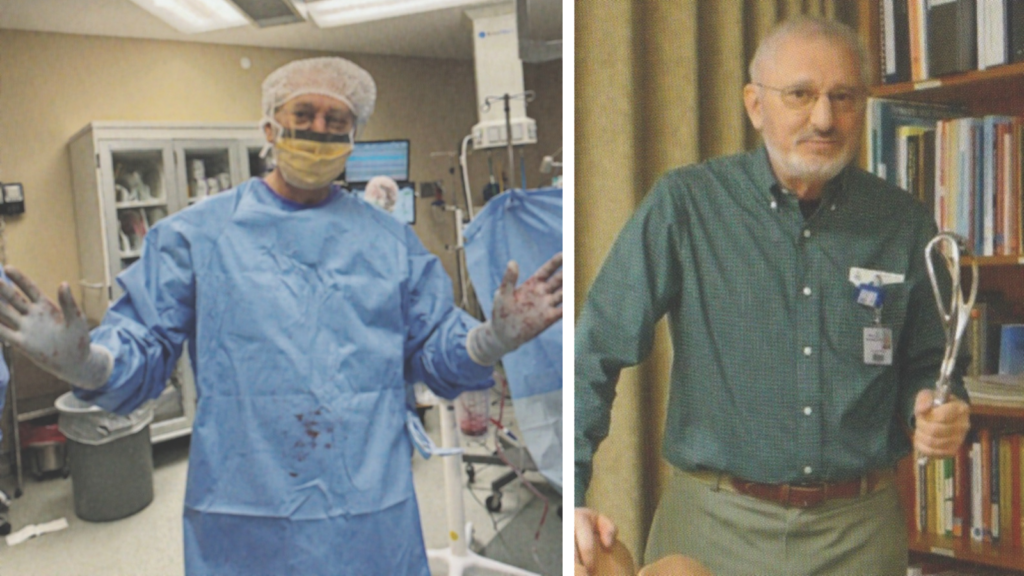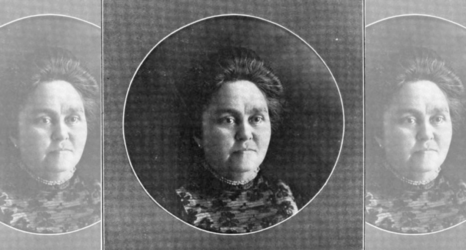“Abortion providers are given advice on how to avoid attacks,” wrote Dr. Steven H. Eisinger, an ob-gyn for over four decades. “Drive different routes; be acutely aware of your surroundings; never stand in a window.”

Last summer, the Supreme Court overturned the longstanding precedents of Roe v. Wade, representing the largest blow to women’s constitutional rights in history. A series from Ms., Our Abortion Stories chronicles readers’ experiences of abortion pre- and post-Roe. Abortions are sought by a wide range of people for many different reasons. There is no single story. Telling stories of then and now shows how critical abortion has been and continues to be for women and girls.
The fall of Roe will strain abortion access nationwide. We cannot, we must not lose the right to safe and accessible abortion or access to birth control. Share your abortion story by emailing myabortionstory@msmagazine.com.

A Spy in the Freedom of Choice Clinic
A young woman showed up at Freedom of Choice (my abortion clinic) who appeared—I hesitate to write it—godly. She had a sweet expression and a low voice. Her dress was modest and appeared old-fashioned to me. She was not sure what she wanted to do.
I tried to elicit her story. It had to do with a fiancé who had a job; maybe he was moving and maybe she was in school. It was not clear. She was also quite vague regarding her last menstrual period, contraception and a pregnancy test that she could not quite read. She seemed more interested in asking me personal questions, like, “Why do you do abortions?”
We did not really know if she were pregnant or not. So, I suggested a urine pregnancy test and an ultrasound, as I could not advise her without knowing if she were pregnant and how far along she was. She declined both tests.
Then she said: “Doctor, do you think I should have the abortion?” I refused to answer her question directly. “The decision is yours to make, not mine,” I said. “My job here at Freedom of Choice is to give you the facts and the options. That is why we need to do the pregnancy test and the ultrasound. If you are early, you have lots of time to make up your mind and several options. If you decide to go ahead with the abortion, I will help you to the best of my ability.
“Who knows you are pregnant, and who knows you are here? What about your boyfriend? Do you have a counselor or a minister?” And so on.
All the while I was talking, she smiled clutching her purse, and did not respond with any solid information. Eventually, she left without undergoing the tests but with a promise to “come back soon.”
After she left, my office manager shouted to me: “She was a plant! She was a right-to-lifer, and she was recording the whole thing!”
“My God,” I thought. “Kara’s right!”
I had not figured it out. The patient was trying to trap me into saying something inappropriate, like: “Of course, you should have the abortion.” We did not hear from her again. Her phone number and address turned out to be phony. She probably avoided any testing because she was not pregnant at all.
Abortion Provider Has a Close Call
I concluded that he was a right-to-life zealot who was planning to attack me. I considered my options and defenses. I steeled myself for the attack.
For a short time, I wore a bulletproof vest when I went to the abortion clinic. It was a massive inconvenience, and the risk seemed low. So, I stopped wearing it.
Abortion providers are often given advice on how to avoid attacks: Drive different routes; never allow your car to be boxed in; be acutely aware of your surroundings; never stand in a window; carry a whistle, a vest, or a gun. I have never been attacked. But I was on the alert.
I did have a very close call once—so close I have to laugh when I think about it.
I was crossing a parking lot behind the hospital. I saw a guy who was also crossing the parking lot. He was middle-aged and looked angry. Our paths were going to intersect. I concluded that he was a right-to-life zealot who was planning to attack me. I considered my options and defenses. I steeled myself for the attack. We passed each other. He nodded a greeting and got into his car. I walked on. He was just a guy crossing a parking lot.
Real Emergencies, But No Adverse Outcomes
Every patient from my abortion practice that I ever admitted did well, and no disasters such as hysterectomy or death occurred.
About once a year, on average, I admitted a patient through my hospital emergency department, usually for bleeding and retained POC (products of conception) or a fever and tenderness diagnosed as post-abortal infection. In 12 years of operation, I had to get out of my bed and go to the hospital to take care of an abortion patient with a problem on about six or seven occasions.
Every patient from my abortion practice that I ever admitted did well, and no disasters such as hysterectomy or death occurred. Likewise, every patient that I knew about who was admitted to another hospital also did well—no serious adverse outcomes. And no lawsuits despite many thousands of medical and surgical abortions under stressful circumstances.
Once, I admitted a patient directly from the Freedom of Choice office. I had done an uneventful first-trimester surgical abortion for her in the office, and she began to bleed heavily—really heavily, immediately thereafter. None of my usual strategies seemed to control the bleeding. On ultrasound, I could see the source of the bleeding: the lower segment of the uterus, where she had a scar from a previous cesarean section. I suspected that she had a cesarean scar ectopic pregnancy, a rare occurrence. For the only time in FOC’s 12 years of activity, a patient was evacuated to the hospital by stretcher and ambulance.
In the operating room, I opened her abdomen. I excised the scar on the front of the uterus where the bleeding was coming from and stitched the defect tightly. I had never seen or heard of this operation before this episode, but it seemed to work. A pathology exam confirmed that the pregnancy implantation had occurred there. She did well post-op, but I have grave misgivings about another pregnancy.
Complications, like a dark, croaking raven, forever lurk over my shoulder. But I have been skillful—and lucky.
Share your abortion story by emailing myabortionstory@msmagazine.com. Thanks to Val Diez Canseco, who provided editorial assistance with this piece.
Up next:
U.S. democracy is at a dangerous inflection point—from the demise of abortion rights, to a lack of pay equity and parental leave, to skyrocketing maternal mortality, and attacks on trans health. Left unchecked, these crises will lead to wider gaps in political participation and representation. For 50 years, Ms. has been forging feminist journalism—reporting, rebelling and truth-telling from the front-lines, championing the Equal Rights Amendment, and centering the stories of those most impacted. With all that’s at stake for equality, we are redoubling our commitment for the next 50 years. In turn, we need your help, Support Ms. today with a donation—any amount that is meaningful to you. For as little as $5 each month, you’ll receive the print magazine along with our e-newsletters, action alerts, and invitations to Ms. Studios events and podcasts. We are grateful for your loyalty and ferocity.





